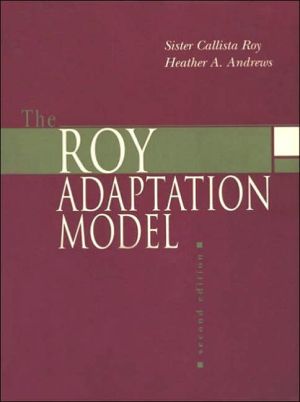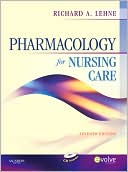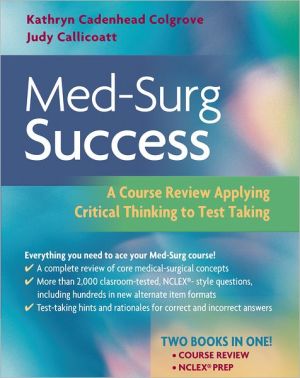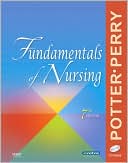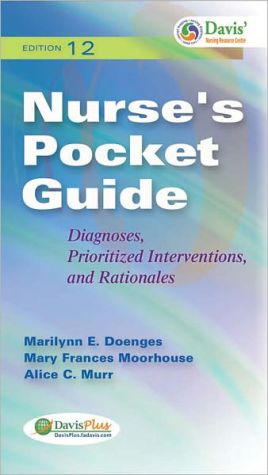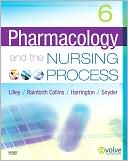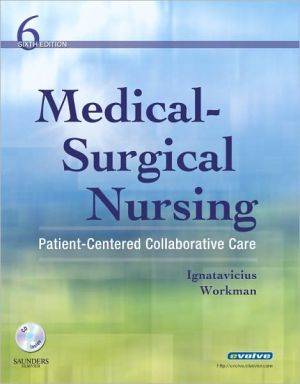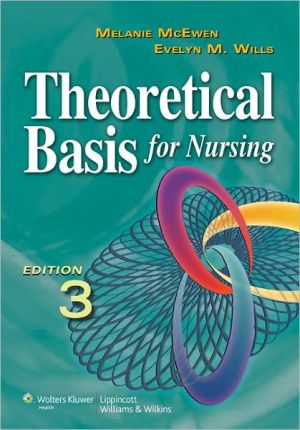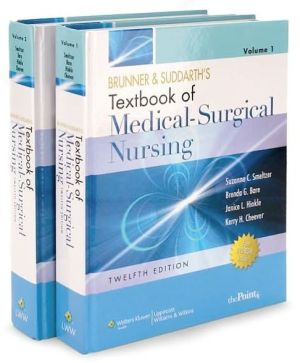The Roy Adaptation Model
A thoroughly revised and updated book, this definitive new edition reflects the latest advances in the popular Roy Adaptation Model, one of the most widely implemented nursing theories.\ Compact and consistent, this book focuses on the essentials of nursing practice and theory while integrating the conceptual framework of the Model into contemporary practice. Standardized nursing NANDA diagnoses are used consistently throughout the book. New case studies are included in all adaptive mode...
Search in google:
Consistent and standardized use of NANDA diagnoses, case studies presented with nursing care planning, the addition of the adaptive processes of groups, and Roy's adaptation of the model for the 21st century are all features of this new, updated, and expanded edition. Mary Ellen Wurzbach This text is an introduction to the Roy Adaptation Model for nursing education and clinical nursing practice based on the model developed by Sister Callista Roy. The previous edition was published in 1991. This updated second edition, according to the editors, maintains the essential concepts of the model while reflecting new developments and enhanced interpretation of the model elements. It is designed to focus on socially and culturally sensitive healthcare delivery, expansion of the theoretical basis for Roy's adaptive modes, and application to both individuals and groups. It is intended for agencies and educational institutions currently using the Roy Adaptation Model as the basis for practice and education. According to the editors, essential content is provided for beginning nursing students, new nursing service personnel, and faculty. I believe it would also be of great assistance in graduate theory courses. There have been several changes in content and organization from the first edition. These include the addition of three levels of adaptive processes/integrated life processes, compensatory processes and compromised processes, and the inclusion of adaptive processes of groups as well as individuals with application of nursing care planning to both. In addition, Roy's typology of positive indicators of adaptation and adaptation problems is compared to NANDA's nursing diagnoses. Roy's definition of adaptation for the 21st century is introduced. There have been substantive changes from the previous edition which justified replacing it. The current edition, with its application of Roy's Adaptation Model to nursing assessment, planning, intervention, and evaluation provides acomprehensive guide for both students and practitioners. The integration of the nursing process, Roy's typology, and nursing diagnosis for individuals and groups makes it essential reading for both scholars and clinicians. This text is a welcome addition to both the theoretical and clinical nursing literature. Seldom have nursing conceptual structures been this well developed.
Contributors Contributors xv Preface xvii PART I Introduction to the Roy Adaptation Model 1 Chapter 1 Development of Nursing Models 3 Objectives 3 Key Concepts Defined 4 Nature of Nursing 4 Nursing Models 10 Summary 22 Exercises for Application 23 Assessment of Understanding 23 References 25
\ From The CriticsReviewer: Mary Ellen Wurzbach, RN, MSN, PhD(University of Wisconsin-Oshkosh)\ Description: This text is an introduction to the Roy Adaptation Model for nursing education and clinical nursing practice based on the model developed by Sister Callista Roy. The previous edition was published in 1991.\ Purpose: This updated second edition, according to the editors, maintains the essential concepts of the model while reflecting new developments and enhanced interpretation of the model elements. It is designed to focus on socially and culturally sensitive healthcare delivery, expansion of the theoretical basis for Roy's adaptive modes, and application to both individuals and groups.\ Audience: It is intended for agencies and educational institutions currently using the Roy Adaptation Model as the basis for practice and education. According to the editors, essential content is provided for beginning nursing students, new nursing service personnel, and faculty. I believe it would also be of great assistance in graduate theory courses.\ Features: There have been several changes in content and organization from the first edition. These include the addition of three levels of adaptive processes/integrated life processes, compensatory processes and compromised processes, and the inclusion of adaptive processes of groups as well as individuals with application of nursing care planning to both. In addition, Roy's typology of positive indicators of adaptation and adaptation problems is compared to NANDA's nursing diagnoses. Roy's definition of adaptation for the 21st century is introduced.\ Assessment: There have been substantive changes from the previous edition which justified replacing it. The current edition, with its application of Roy's Adaptation Model to nursing assessment, planning, intervention, and evaluation provides a comprehensive guide for both students and practitioners. The integration of the nursing process, Roy's typology, and nursing diagnosis for individuals and groups makes it essential reading for both scholars and clinicians. This text is a welcome addition to both the theoretical and clinical nursing literature. Seldom have nursing conceptual structures been this well developed.\ \ \ \ \ Mary Ellen WurzbachThis text is an introduction to the Roy Adaptation Model for nursing education and clinical nursing practice based on the model developed by Sister Callista Roy. The previous edition was published in 1991. This updated second edition, according to the editors, maintains the essential concepts of the model while reflecting new developments and enhanced interpretation of the model elements. It is designed to focus on socially and culturally sensitive healthcare delivery, expansion of the theoretical basis for Roy's adaptive modes, and application to both individuals and groups. It is intended for agencies and educational institutions currently using the Roy Adaptation Model as the basis for practice and education. According to the editors, essential content is provided for beginning nursing students, new nursing service personnel, and faculty. I believe it would also be of great assistance in graduate theory courses. There have been several changes in content and organization from the first edition. These include the addition of three levels of adaptive processes/integrated life processes, compensatory processes and compromised processes, and the inclusion of adaptive processes of groups as well as individuals with application of nursing care planning to both. In addition, Roy's typology of positive indicators of adaptation and adaptation problems is compared to NANDA's nursing diagnoses. Roy's definition of adaptation for the 21st century is introduced. There have been substantive changes from the previous edition which justified replacing it. The current edition, with its application of Roy's Adaptation Model to nursing assessment, planning, intervention, and evaluation provides acomprehensive guide for both students and practitioners. The integration of the nursing process, Roy's typology, and nursing diagnosis for individuals and groups makes it essential reading for both scholars and clinicians. This text is a welcome addition to both the theoretical and clinical nursing literature. Seldom have nursing conceptual structures been this well developed.\ \ \ 5 Stars! from Doody\ \
